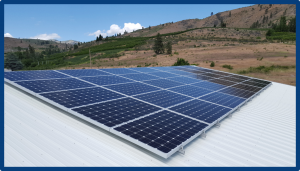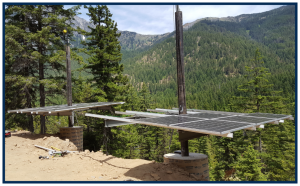How Many Solar Panels Do I Need for My Home?
How Much Solar Do I Need?
How many solar panels you need for your home depends on how much energy you use. This is also true with other alternate types of power systems, such as energy storage or a backup generator. The first step in sizing a system for your house is to figure out how much power you need to run the various loads – aka your appliances and other items like light bulbs that use electricity. That means evaluating your electrical use is a critical first step.
Sizing a Grid-Tie Solar System
 For people on the grid, 12 months of your kilowatt hour use from your electric bills can provide the information needed. If you haven’t been in your home for at least a year, gathering consumption data from your appliances and other electrical items like light bulbs will allow you to use our load calculator to determine how much power you will need. You will also want to consider things that might be added or changed in the future that will affect your electrical use – like buying an electric vehicle or switching from gas to electric space heating.
For people on the grid, 12 months of your kilowatt hour use from your electric bills can provide the information needed. If you haven’t been in your home for at least a year, gathering consumption data from your appliances and other electrical items like light bulbs will allow you to use our load calculator to determine how much power you will need. You will also want to consider things that might be added or changed in the future that will affect your electrical use – like buying an electric vehicle or switching from gas to electric space heating.
Sizing a Off-Grid Solar System
 For off the grid applications load evaluation is even more important, because you not only need to know how much power you need to produce, but also how much energy you need to be able to store in batteries for use when you aren’t generating electricity (like at night and on dark days). Remember, when you’re off-the-grid you can’t just chose to buy a little extra from the utility when you need more power, so you’ll want to have a plan that includes as many “what ifs” as possible.
For off the grid applications load evaluation is even more important, because you not only need to know how much power you need to produce, but also how much energy you need to be able to store in batteries for use when you aren’t generating electricity (like at night and on dark days). Remember, when you’re off-the-grid you can’t just chose to buy a little extra from the utility when you need more power, so you’ll want to have a plan that includes as many “what ifs” as possible.
Sizing a Grid Hybrid Solar System (Solar with Battery Backup)
Sizing a grid-hybrid solar system is kind of a cross between sizing grid tied solar and off grid solar. Using data from your electric bill, plus information about what things you consider essential to run during a power outage, it is possible to calculate how many solar panels you need to offset your power use, and how much energy storage (solar batteries) are needed to run your essential loads when utility power is out.
Using Our Solar Load Calculator
List your appliances and their power consumption in the calculator below. Be sure you include everything in every room of your home that uses electricity, including your light bulbs. If it’s on a switch or plugged into an outlet, list it. For your light bulbs, it’s easiest to add up all wattages first and then list them as one item in the calculator.
Don’t Forget your Phantom Loads
Many appliances consume power even when they’re off. These are called many things, including phantom loads, vampire loads, or the much less sinister standby loads. Whatever you call them, these loads fulfill an important function – they allow the conveniences of modern life to be ready on a moment’s notice. They keep your DVD and microwave clock on, your wireless printer ready to print, and your TV ready to play your favorite show – with the click of a button.
These loads are small, but when you add them all together, and run them over time, the amount of power they use matters. So don’t forget the “ghosts” in your home.
Loads can be continuous – like an internet router or tropical fish tank, or intermittent – like a bathroom exhaust fan or lighting. Many loads – such as a refrigerator, toaster, microwave or vacuum cleaner – use a large amount of power but only for short periods. All of this data is important when sizing a power system, and critical when sizing an off-grid power system.
